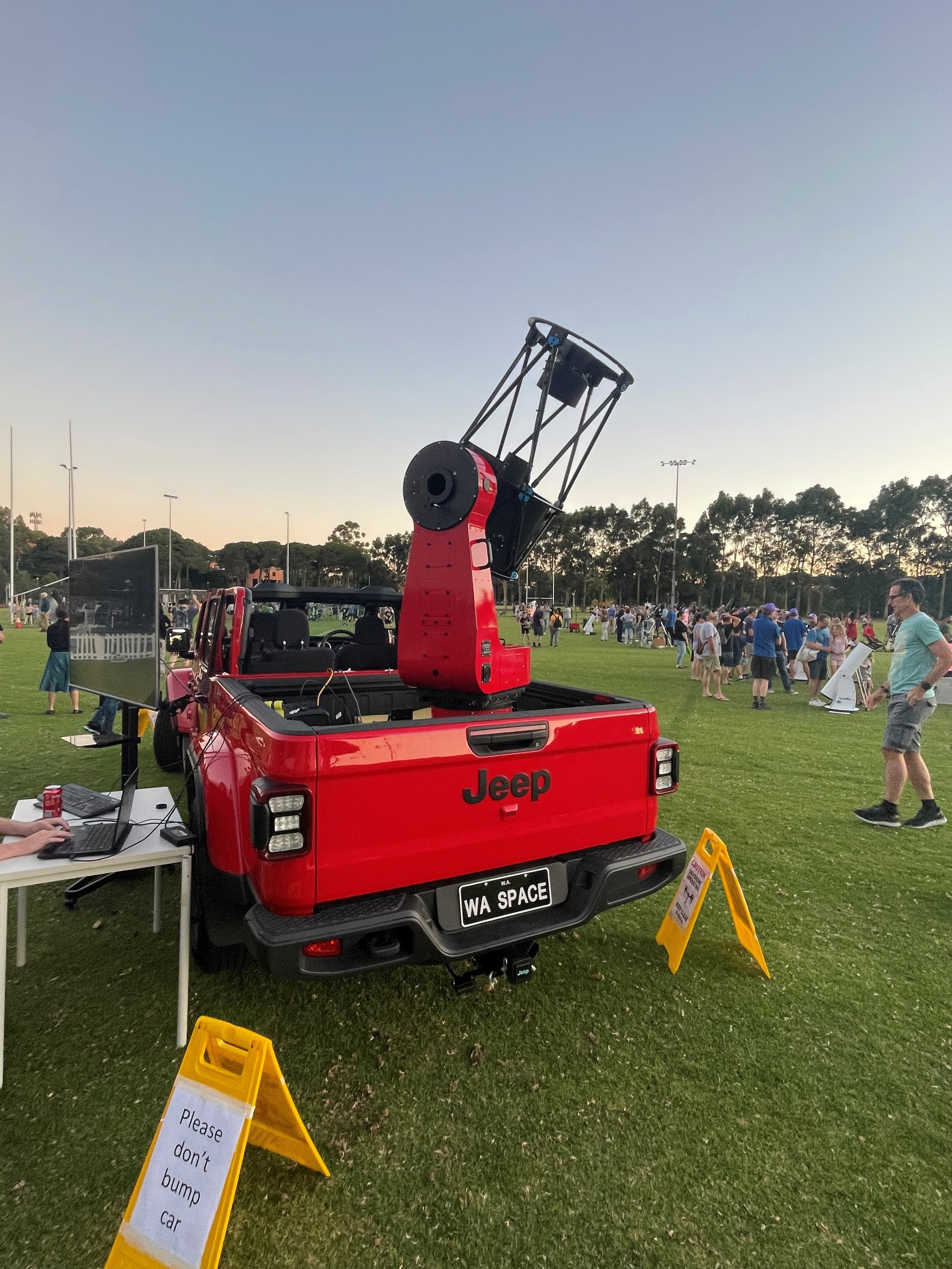
News & Engagement
Stay Updated on TeraNet’s Latest Developments
Explore our latest updates, upcoming events, and groundbreaking research in optical communication.
Bring Space Communication to Your Classroom
TeraNet invites schools to participate in an exciting journey into the world of space communication and cutting-edge optical technologies. Through interactive sessions and hands-on experiences, we aim to ignite curiosity and inspire the scientists, engineers, and innovators of tomorrow.
ISC Space Book Camp
The International Space Centre’s Space Boot Camp selects eager and passionate students entering Year 11, from around Western Australia to extend their knowledge and contacts in the space industry. Held annually, the inaugural exhibition of the TeraNet mobile ground station will occur in 2026.
TeraNet Related Publications
Explore the research outputs of the TeraNet project

Asia-Pacific Regional Space Agency Forum
The Asia-Pacific Regional Space Agency Forum (APRSAF) was established in 1993 to enhance space activities in the Asia-Pacific region.
Space agencies, governmental bodies, international organizations, private companies, universities, and research institutes from over 40 countries and regions take part in APRSAF, the largest space-related conference in the Asia-Pacific region. The increasing attendance of high-ranking officials and participants from industry at APRSAF events provides opportunities to discuss international cooperation for space activities in concrete terms.
APRSAF currently organizes five working groups - Satellite Applications, Enhancement of Space Capability, Space Education, Space Frontier, Space Policy and Law - and Space Industry Workshop to share information about the activities and future plans of each country and region in these respective areas. APRSAF also supports the establishment of international projects as solutions for common issues, such as disaster management and environmental protection, so that participating parties will benefit from mutual cooperation.

Indo-Pacific Space and Earth Conference
Bringing together leaders from across theIndo-Pacific and beyond for opportunities in space and cross-sector technologies and innovation

AstroFest
Astrofest, Australia’s largest free Space and Astronomy festival, will celebrate its 15th anniversary in 2024, marking a significant milestone.
On Saturday, 9th November, space enthusiasts, families and curious minds are invited to join the festivities for an extraordinary experience at this iconic event at Curtin Stadium, Curtin University.
Visitors can look forward to gazing through numerous telescopes, exploring the planets, stars and other celestial objects. At the expo, they can discover the latest in space technology and science, visit the astrophotography exhibition, vote for the People’s Choice Award and marvel at the stunning images captured by local amateur photographers. There is an exciting Discovery Zone with fun interactive activities for kids, and in the Serious Science and Experts Live Zone, visitors can hear from local astronomers about what they are researching in space.

ICSO 2024 | International Conference on Space Optics
TeraNet will be presenting at the International Conference on Space Optics, in France hosted by CNES and ESA.

Australian Space Research Conference
Australia’s premier space research conference. Celebrating research, empowering diversity, and catalysing collaboration In Australian space exploration.

Indian Ocean Defence & Security Conference
Australia, the United Kingdom and the United States are exploring opportunities in developing joint advanced military capabilities under the AUKUS partnership, including provision of nuclear-powered submarines and development of a range of advanced technologies across all facets of defence capability.
Meanwhile regional tensions and the growing strategic importance of the Indian Ocean are also bringing focus to Australia’s role within the Quad diplomatic partnership, between Australia, India, Japan and the United States.
At Indian Ocean Defence & Security 2024 (IODS 2024), in Perth Western Australia, the geographic fulcrum between the UK, India, Japan and US, key Australian and international government, defence and industry leaders will explore the theme:
Where AUKUS Meets The Quad.
The event will highlight challenges and opportunities for international engagement, and delve into how Australian industry may support diplomacy, defence and security policy in the region.

European Frequency and Time Forum 2024
The European Frequency and Time Forum (EFTF) is an international conference and exhibition, providing information on recent advances and trends of scientific research and industrial development in the fields of Frequency and Time.

Royal Society of Western Australia Symposium
‘Constructing the TeraNet optical communications ground station network in Western Australia’


